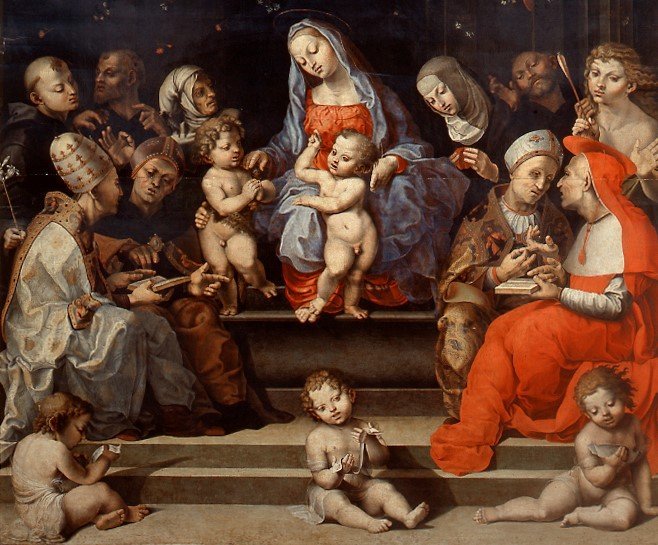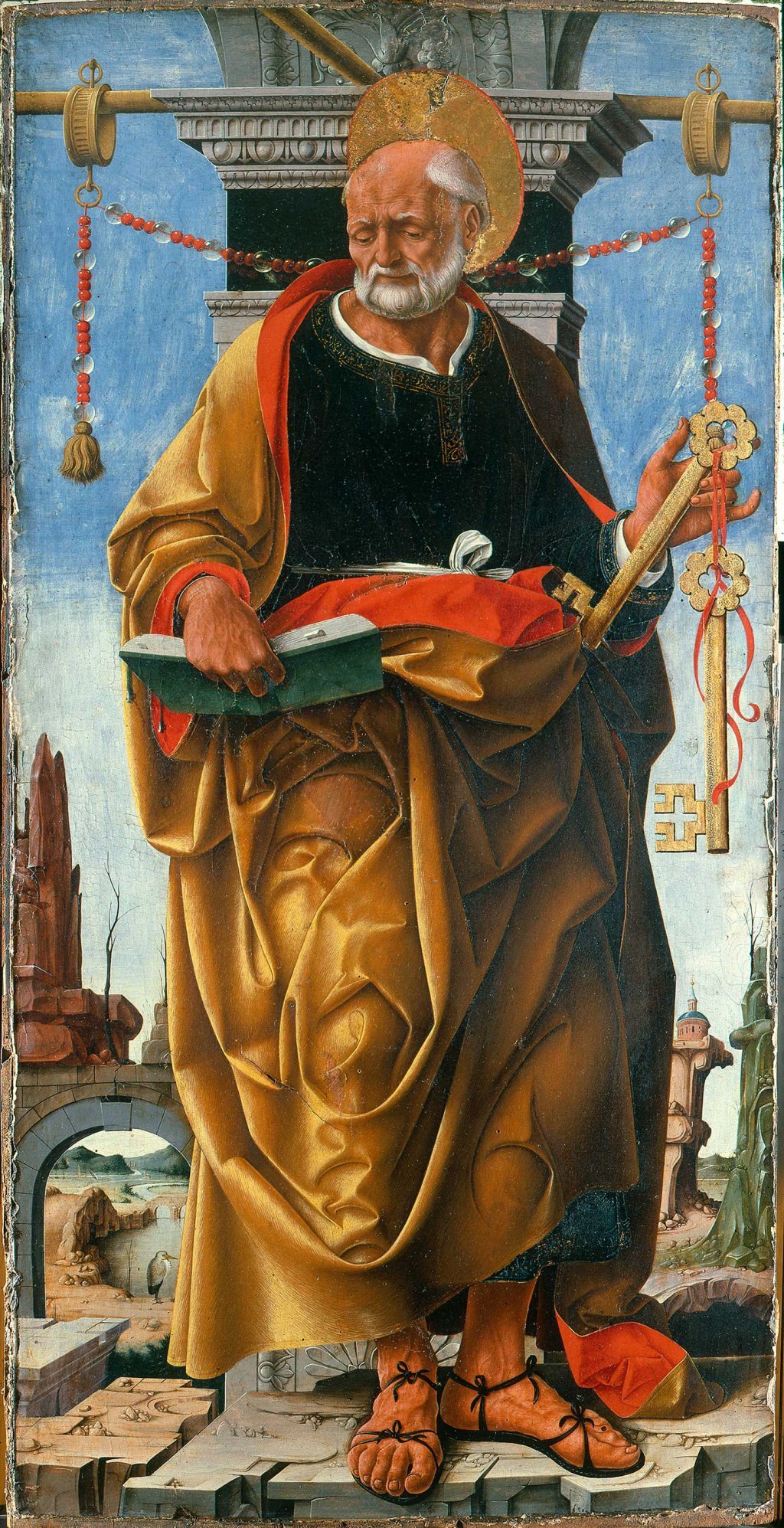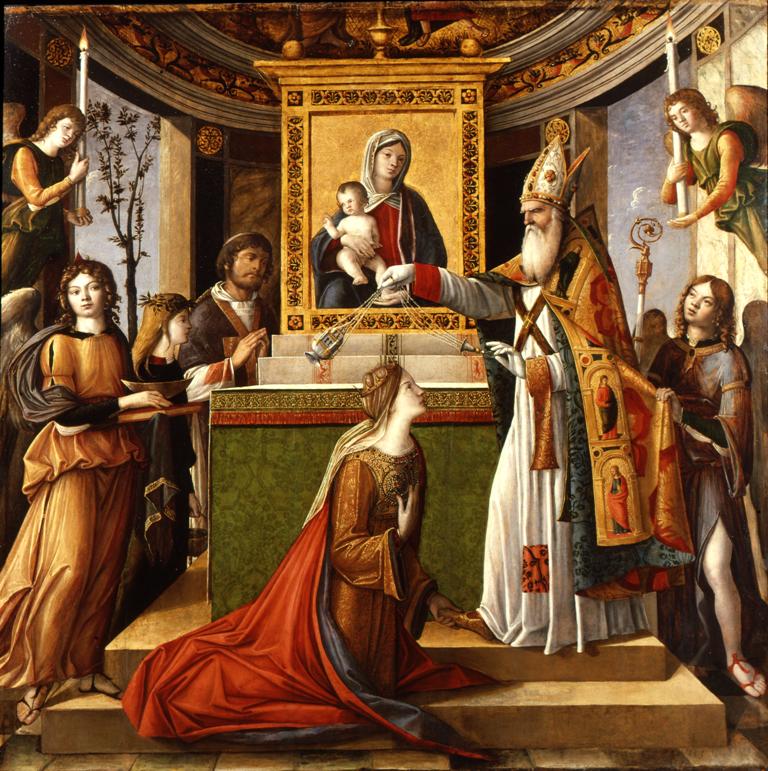What do you know about Renaissance shadow?
The evolution of painting could also be captured by chasing shadows. An itinerary among five less known masters to be discovered in museums’ online collections.
Even if they cannot replace the direct experience of artworks, museums’ online collections can still lead us through new paths of discovery. For example online collections can allow us to neglect the most celebrated masterpieces and instead embark on lateral and equally fascinating paths in the history of ancient art with more time and less effort; we could focus our attention on paintings that perhaps we would not have considered when visiting in person, or on works that are inaccessible because they are in storage or on loan to other institutions. Moreover, museums’ online collections can help us to dismantle an overly schematic view of art history, thus allowing us to re-evaluate excellent authors who may be lesser known to the general public. One of the ways to do so is to carefully look at the details in the paintings. A visit to a museum could actually revolve around a detail alone, while revealing aspects that go far beyond that single detail. Chasing shadows in paintings is one of these possible paths. And this is precisely the journey that we will undertake, in the Pinacoteca di Brera in Milan, immediately after illustrating how the theme of shadows in the Italian Renaissance is anything but obvious.

A Renaissance with few shadows
Although we are all accustomed to seeing works by great masters where there is a contrast beteween light and dark in the draperies, it is not obvious that all the painters of the 15th and 16th centuries considered useful to correctly and systematically represent the so-called “ombre portate”, i.e. those forms perfectly outlined on the surfaces, with the relative variations in colour, which occur due to the laws of optics. This is a central aspect. As anyone knows, shadows can deeply influence the way things appear to us in reality; and in the same way, in a painting, they can determine the general sense of the ambience, therefore of the form we perceive and consequently of the message that comes from it
Different cultures have done without shadows in the visual arts: there are no shadows in traditional Chinese painting, for example; nor in representations of ancient Egypt. Suddenly, however, shadows appear in some Roman mosaics from the second century AD. The introduction of shadows in the visual arts is indeed owed to the West. But as Ernst H. Gombrich wrote, even some of the most attentive artists “seem to have deliberately avoided the ombra portata”.

This is immediately evident, and can make sense, in the 13th and 14th centuries, when painters were still looking for an effective solution to the problem of representing volumes and proportions in space, or – legitimately – were not interested in that kind of research. What however one would not expect is that the use of shadows was a mixed blessing in the fifteenth century, that is in the century of prospective, of volumes and of space.
The same Leonardo da Vinci, whose “sfumato” caused rivers of ink to flow from critics, had a relationship with shadows that was anything but linear. On the contrary, he believed that sharp shadows, in the presence of strong natural light, were a disturbing element that could threaten the harmony in the painting; this is clearly stated in some pages of his Treatise on Painting. This also explains the light mist that softens his paintings, through which he attempts to ease the violence of the reality.
Like Leonardo, most artists of the 15th century apparently considered the shadows an inessential element, if not a cumbersome nuisance. Already at the beginning of the century – with the exception of a few big names, such as Masaccio – it is difficult to come across “ombre portate” in paintings. When it comes to the shadows of bodies and objects, they are often just hinted at. It is necessary to wait for Caravaggio for the shadows to start playing a relevant role in the pictorial microcosm, and to actually become tools to increase the brilliance of what was not in the shadows.
Between Masaccio and Caravaggio, however, almost two centuries go by, and in this lapse of time there are several cases in which the shadow, despite being generally overlooked, is instead taken into account, albeit to different extents. These are the cases that we are now going to look for. Here we are ready for our journey through the shadows of a lesser known Renaissance. Let’s take advantage of the rich museum online collection of the Pinacoteca di Brera. We deliberately neglect the most famous artists, such as Piero della Francesca, Andrea Mantegna, Giovanni Bellini, Raffaello (who were anyway all well aware of the topic of shadow). And we focus our attention on five paintings made between mid-15th and early 16th century: more or less when Leonardo lived.
An itinerary in five works
The San Giovanni di Donato de Bardi. Scrolling through the works of the Pinacoteca di Brera in chronological order, you have to go through at least thirty items before finding a shadow worthy of remark. In the real exhibition itinerary you would find it in Room X: specifically in the San Giovanni Battista attributed to Donato de Bardi, a painter active in Liguria between ca. mid-1420 and 1450. It is an oil on wood dated 1445-50, and it is the fragment of a larger polyptych now dismembered. Being a fondo oro, it is hard to imagine how the saint’ shadow could be casted on the background. However, the fact that the character’s left side is wrapped in dark tones, both with the shadings on his face and with the choice of leaving the left side of his robe in shadow – completely and without hesitation – increases the intensity and monumentality of the figure, already enhanced by the accurate anatomical rendering of his face and chest.

Such a marked presence of shadow is not to be found in any of his other well-known works; like the Madonna and Child with Saints Philip and Agnes ca. 1425–30 that is housed at the Metropolitan Museum in New York. If it is rather a surprise to find in Donato de Bardi a shadow worthy of Masaccio, it must be noted that this painter never really overlooked the problems of light in his work. It may well be that in 15th century Liguria Donato de Bardi had come into contact with Flemish culture and with the use of oblique light which wasn’t certainly a taboo in Flemish art. Donato seemed to have treasured that lesson and was indeed able to harmonise it with the late-Gothic culture of his education and with the Renaissance one of his mature production. The shadow, here, is therefore the indication of a very refined culture, rich of different stimuli that blend into a very original style.
Francesco del Cossa, Saint Peter. Perhaps less known to the general public than the other two leaders of 15th century Ferrarese art (Cosmé Tura and Ercole de Roberti), Francesco del Cossa was a very significant painter in the second half of the 15th century. His St. Peter housed in the Pinacoteca di Brera shows that del Cossa was aware of the most advanced achievements of his time, from Piero della Francesca to Mantegna. In this work the painter shows a use of shadows which turns out to be an essential instrument of the whole composition. They appear not only on the figure, from the fleshy pink to the drapery, but are also well defined in details that the eye of the viewer of the time would not have caught from a distance; the work is part of a polyptych that was made with Ercole de Roberti for the Basilica of San Petronio in Bologna, and was therefore placed high up on an altar (other parts of the polyptych are now preserved in museums such as the National Gallery in London, the National Gallery in Washington; the Vatican museums).

Among these “invisible” shadows, very remarkable are those that project some tiny details, such as the stones on the irregular surface of the base, those of the architecture behind the character and even the shadows reflected in the small glass spheres of the slender festoon behind the saint. The particular attention paid to light in this work is not an isolated case in the artist’s practice. In another painting, St. John the Baptist, part of the same polyptych, which is also housed in the Pinacoteca di Brera (and also not on display), even the saint’s walking stick and the lizard’s little head at his feet cast their small but well-defined shadows.
Galla Placidia by Niccolò Rondinelli. Very little is known about this mysterious artist who apparently was a pupil of Giovanni Bellini in Venice in 1495; We know that Niccolò Rondinelli was in Ravenna in 1502 and that his only certain work is a St. Sebastian made for the cathedral of Forlì. There are, however, several works attributed to him, such as this St. John the Evangelist Appearing to Galla Placidia ( this work is not exhibited in the gallery). Every aspect of this painting seems to convey his ability to work with light. It can be spotted in the magnificent draperies, and in the shading of the Madonna with Child that appears as a painting in the painting (and where even the internal shadow of the fake frame is underlined), but it is remarkable especially in the lower part of the panel.

Here the skills of the painter and the reality merge into the exact identification of the shadows projected from the foot of the angel on the left side and from the mantle of Galla Placidia on the small steps and on the same base. The Pinacoteca di Brera preserves another work by the same painter (albeit also not on display): Madonna and Child Enthroned between St. Nicholas, St. Peter, St. Bartholomew and St. Augustine, dated 1502. The critics have noticed a massive intervention of his collaborators; here, however, the shadows are resolved mostly in the draperies, while not much attention is paid to those projected by the figures of the protagonists and saints.
The Saint Ursula by Giovanni Martini from Udine. From about the same period of Niccolò Rondinelli’s Galla Placidia is the oil on canvas depicting St. Ursula among the Virgins, painted between 1503 and 1507 by Giovanni Martini da Udine (the work is not on display). The artist painted many important works which are scattered around the greatest museums in the world, from the Correr Museum in Venice to the National Gallery in London, to the Hermitage; however he soon left the practice of painting to dedicate himself to wood carving, and perhaps it was precisely this change of interest that prevented his painting to reach full maturity. In our itinerary, his St. Ursula has caught our attention for at least one interesting detail: the presence of the cartouche at the base of the throne. It is a small but very successful rhetorical artifice that casts true and insistent shadows: an almost Flemish reference that also recurs in the metallic substance of the robes of the saint and the virgins.

Disputation by Girolamo Genga. The Disputation over the Immaculate Conception by Girolamo Genga, painted probably between 1516 and 1518 seems to be a true handbook on shadows. Alongside the Leonardesque sfumato that softens the contours of the figures, there are more clear-cut shadows that spread throughout the composition, as well as the extremely neat silhouette of the putti holding the cartouche in the bottom part of the work – even though Leonardo would have not approved these latter ones. About 160 years later, Filippo Baldinucci would have theorised these three types of shadows in his Vocabolario toscano dell’arte del disegno (Tuscan vocabulary of the art of design) published in 1681. Girolamo Genga is considered by critics a true and original pioneer in the early 16th century artistic scenario, as well as one of the most interesting personalities in the Duchy of Urbino.

Art historians have worked hard to retrace his artistic path. During his life he travelled a lot between Urbino, Siena, Florence, Rome and many other places. You can spot in his work the influence of Luca Signorelli, who was his master and with whom he collaborated in Loreto, Cortona, Monteoliveto, Siena and Orvieto. His Disputation over the Immaculate Conception is part of a polyptych which was commissioned for the high altar of the church of Sant’Agostino in Cesena (then dismembered amongst various collections following art requisitions under Napoleon). This work is considered to be his masterpiece, also for what has been defined a ‘witty interpretation of Michelangelo’s manners’ which makes Girolamo Genga a sort of ante-litteram mannerist. Leonardo Da Vinci passes away the year after this work was painted. A new era for art had already begun, with many shadows indeed.
Bibliografia
Officina ferrarese, R. Longhi, Roma, 1934.
Pittura a Pavia dal romanico al settecento, Mina Gregori (a cura di ), Milano, 1988.
Italian pictures of the Renaissance, I, Venetian School, B. Berenson, London 1957.
Bellini and his collaborators, A. Tempestini, in The Cambridge companion to Giovanni Bellini, a cura di P. Humfrey, Cambridge, 2004.
Girolamo Genga e l’altare di Sant’Agostino a Cesena, di A. Colombi Ferretti, Bologna, 1985.
The Heritage of Apelles, E. Gombrich, Oxford, 1976.
Shadows. The depiction of Cast Shadows in Westwern Art, E. Gombrich, London, 1995.
November 25, 2020
